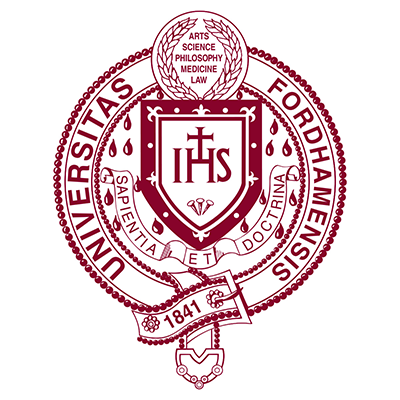Fordham: A Story of Transformation
Fordham University began in the mind and heart of John Hughes, the Irish-born Catholic bishop who would later become the first archbishop of New York. He believed fervently in the power of education to help downtrodden Catholic immigrants advance in America, and traveled as far as Europe to raise funds for buying the plot of rustic land north of Manhattan—in what is today the Bronx—where he saw a great university taking root. Initially named St. John’s College, the school opened at Rose Hill on June 24, 1841, with just six students but big ambitions. St. John’s became a Jesuit college five years later, after Hughes sold it to the Society of Jesus.
In 1907, St. John’s College was renamed Fordham University—a transformation that began two years earlier with the opening of its first graduate schools: a medical school, discontinued in 1921, and a law school that is widely regarded today as one of the best in the nation. Graduate schools of education, arts and sciences, and social service were established in 1916, and the School of Accounting—forerunner of the Gabelli School of Business—opened in 1920, housed in Manhattan’s Woolworth Building. A college of pharmacy was also established in this period, lasting until 1971. In 1944, Fordham founded what would become the School of Professional and Continuing Studies, and the Graduate School of Religion and Religious Education began in 1969.
The establishment of the Lincoln Center campus in the 1960s was a milestone in the University’s rise to greater prominence. In the following decades, Fordham made major strides toward becoming a national and global institution with the opening of new residence halls at both the Rose Hill and Lincoln Center campuses; the construction of the William D. Walsh Family Library at Rose Hill; the opening of the Fordham London campus; and the Lincoln Center campus redevelopment completed in 2016.
As Fordham has grown from a small college into the Jesuit University of New York, it continues reaching out to its local community through service, academic partnerships, and various other initiatives such as the Higher Education Opportunity Program for students from underrepresented groups. Today, the seed planted by John Hughes has flowered into a truly global university, one that continues to transform lives and transform the world through the dedication of its faculty and the work and achievements of its alumni across all fields of endeavor.
The Fordham University Seal

The Great Seal of Fordham University proclaims that Fordham has been a Jesuit university since its founder, Archbishop John Hughes, entrusted it to the care of the Society of Jesus five years after its founding in 1841. Hence, the coat of arms of the Society of Jesus stands at the center of the Great Seal of the University. The coat of arms bears the Greek letters for the name Jesus—IHS—with the cross resting in the horizontal line of the letter H, and the three nails beneath in a field framed in maroon, the color of the University, with fleurs-de-lis on the edge of the maroon frame. Around the Society’s coat of arms is a scroll with the University’s motto, Sapientia et Doctrina (Wisdom and Learning). The scroll rests on a field in which tongues of fire are displayed, recalling the outpouring of the gifts of the Holy Spirit of wisdom (sapientia) that marked the first Pentecost.
A laurel wreath at the center of which are listed the names of the disciplines that are or have been taught at the University rests at the top of the seal. (The University had a medical school from 1905 to 1921 and a college of pharmacy from 1912 to 1971.) These central heraldic devices are enclosed within a circular field fashioned as a belt and edged with beads. The field bears the University’s name (rendered in Latin) and the date of its foundation. Fordham University is one of only two institutions in the world whose seals are enclosed with a belt surround. Oxford University, the mother of the universities in the English-speaking world, is the other university whose seal is fashioned in this way.